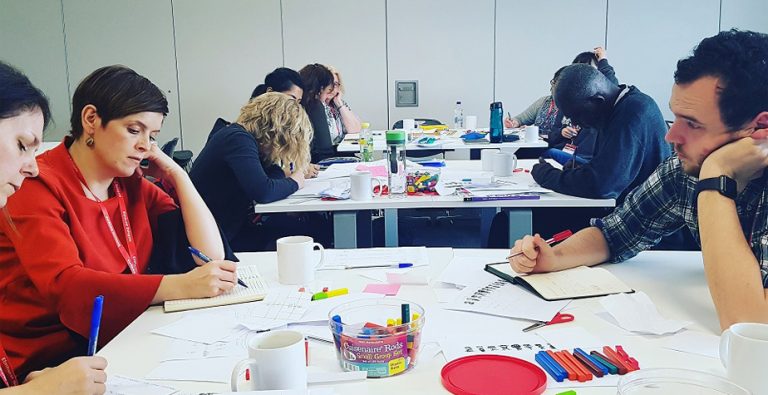The problem-solving game changer
The problem-solving game changer Problem-solving is one area that many children, where ever you are in the world, struggle with. It’s challenging for children to understand what the steps are in order to solve many multi-step problems and in most lessons, as much as teachers say, “Imagine you are the fruit basket….”, word problems are…
The problem-solving game changer
Problem-solving is one area that many children, where ever you are in the world, struggle with. It’s challenging for children to understand what the steps are in order to solve many multi-step problems and in most lessons, as much as teachers say, “Imagine you are the fruit basket….”, word problems are not easy to visualise, or so we thought they weren’t until now.
The bar modelling approach has revolutionalised the way we teach maths. It’s had such a profound impact on the way teachers not just teach problem-solving but also introduce many topics to children, especially at the primary maths stage.
Over the last seven years, I’ve had the pleasure of delivering maths mastery training, which includes bar modelling training, to thousands of teachers all around the world. The visual approach can really help open up questions like never before. So let’s have a look at a question to see what the bar model approach is all about…
A challenging question, I’m sure you will agree. This could be seen as an end of primary or even early secondary level question. So after you have a go, think about how to TEACH solving questions like these. We, as adults, may find a way to solve this but the real question is, what is the most efficient way we can get our pupils to understand this question? Algebra may be something we lean towards, especially those who are confident in their maths ability, but the algebraic solution to this problem may be too early for many of your pupils.
Enter, The Bar Model approach (AKA The problem-solving game changer)
To visually represent this problem, we could use bars to represent the clocks and bags. Here is how you may decide to illustrate the problem in the first instance…

OK, so not too impressive so far right? There isn’t much detail to this visual representation and hence you may feel you can’t do much with this visual aid. Yes, we do have the £394 total cost here, but that isn’t much to go on. So how can we give this image more details? Maybe something like this….

Is that better? Why? Ohh, now we can see the four clocks and six handbags. That makes things a lot clearer. Having said that, the handbag seems like they are the same price as the clock, can we improve on this even further? As we need to take into consideration this part of the question….
Each bag costs £1.50 more than each clock.
So can we show the extra £1.50 for each bag? Why would we do that anyway? Maybe a drawing could help us make further progress in this question.

As the clock is represented by an orange bar, we’ve shown that one bag is £1.50 more than a clock. Can we show this for all the bags? What happens if we do….

Can you see where we are going with this? Think about the next step, what can we ask our children? Shall we ‘let go’ now and let the class attempt the question again? Can they get it this time? What we are doing here is scaffolding with high levels of visual support but, and this is as key to getting the teaching of bar modelling right, there has to be quality questioning that allows children to think and make the next move.

We get to a point where we can see that there are 6 lots of £1.50 and in fact, we may decide to regroup the bars so this is clearer to see. Six lots of £1.50 makes £9, which is a part of the £394. What we also see now is….10 equal orange sections. This is key, can you see why?

As the next phase allows us to subtract the £9 from the total Mrs Beresford spent, leaving us with £385…Why do we do this? Maybe as this leaves us with 10 equal parts. Which is perfect for us to finish the question….

Our final calculation allows us to figure out that Mrs Beresford paid £38.50 for the clock.
So, we hope you agree that the visual representation shown using bar models in this question can really help to open up challenging problems. This is a multi-step word problem which by no means is simple. The bar models, if modelled correctly and with the support of questioning will allow your children to understand and reason better than ever before. This, in turn, and over time, will allow them to solve challenging word-problems using visual approaches. What do you think, can the bar model approach really be a game changer for problme-solving?








